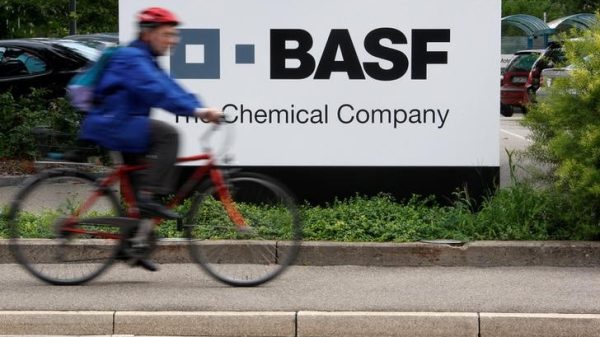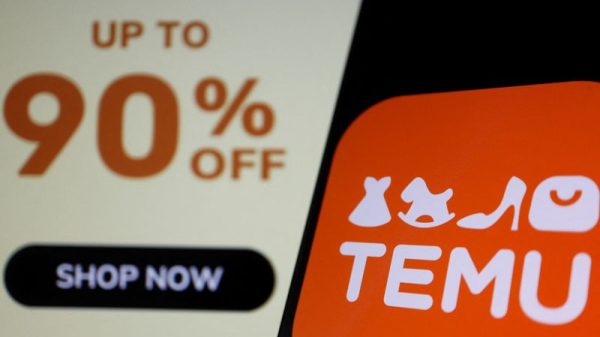Great Ajax Corp (ticker: NYSE:AJX), during its third-quarter 2024 earnings call, announced a strategic shift towards cash-flowing commercial mortgage-backed securities (CMBS) to reach breakeven earnings by Q1 2025. CEO Michael Nierenberg detailed the company’s move to sell down residential assets and reinvest in commercial real estate debt, including a recent bid on $1 billion worth of loans.
Despite a GAAP net loss of $8 million and a negative earnings distribution, Great Ajax upheld a dividend yield of 7.2%. The company, soon to rebrand as Rithm Property Trust, is actively transitioning its investment focus while managing its legacy assets.
Key Takeaways
Great Ajax reported a GAAP net loss of $8 million and a negative earnings distribution of $5.4 million.
The company maintained a dividend of $0.06 per share, with a yield of 7.2%.
As of September 30, 2024, the company had $84 million in cash, with $30 million available for investment.
Great Ajax is transitioning to Rithm Property Trust and focusing on commercial real estate debt.
The company has sold 91% of its legacy residential mortgage loans since the end of Q1.
Rithm’s Genesis business is expected to originate over $3 billion in loans this year, primarily in multifamily lending.
Company Outlook
CEO Michael Nierenberg plans to achieve breakeven earnings by the end of Q1 2025.
The company is rebranding to Rithm Property Trust by the end of Q4 2024.
Rithm aims to fully deploy its available capital of $20 million to $25 million by the end of Q4.
Plans to address $100 million in debt with a 10.25% coupon are underway.
Bearish Highlights
The company experienced a net loss and negative earnings distribution in the third quarter.
Breakeven is not expected this quarter, with goals pushed to the next year.
Bullish Highlights
Great Ajax is focusing on cash-flowing assets, with recent portfolio bids in multifamily, affordable housing, and office segments.
AAA CMBS purchases have yielded low double-digit returns.
The company is exploring investments in data centers and student housing.
Misses
The earnings call revealed that the company would not reach breakeven in the current quarter.
Q&A Highlights
Nierenberg discussed the need for diversified lending strategies and the potential for collaboration between Genesis and Great Ajax.
The company is considering alternative financing options, including debt and equity markets, for future investments.
Optimism was expressed for future earnings growth benefiting equity holders.
In conclusion, Great Ajax Corp, soon to be Rithm Property Trust, is navigating a strategic transition with a clear focus on commercial real estate debt. The company is positioning itself to capitalize on opportunities in the lending market, despite current losses, and is taking steps to ensure a stronger financial footing by early next year.
InvestingPro Insights
Great Ajax Corp’s strategic shift towards commercial mortgage-backed securities aligns with some key insights from InvestingPro. According to InvestingPro Tips, analysts anticipate sales growth in the current year, which could be a result of the company’s new focus on cash-flowing CMBS investments. This expectation of growth is particularly relevant given the company’s recent net loss and negative earnings distribution.
Despite the current challenges, InvestingPro Data shows that Great Ajax maintains a significant dividend yield of 7.38%, slightly higher than the 7.2% mentioned in the earnings call. This aligns with the InvestingPro Tip highlighting that the company pays a significant dividend to shareholders and has maintained dividend payments for 10 consecutive years. This commitment to dividends may be reassuring to investors during the company’s transition period.
The company’s strategic moves are also reflected in its valuation metrics. InvestingPro Data indicates a Price to Book ratio of 0.58, suggesting that the stock might be undervalued relative to its book value. This could be an interesting point for investors considering the company’s rebranding and shift in investment focus.
It’s worth noting that InvestingPro offers 9 additional tips for Great Ajax Corp, providing a more comprehensive analysis for investors interested in the company’s evolving strategy and financial health.
Full transcript – Great Ajax Corp (AJX) Q3 2024:
Operator: Good day, and welcome to the Great Ajax Third Quarter 2024 Earnings Call. All participants will be in listen-only mode. [Operator Instructions] After today’s presentation, there will be an opportunity to ask questions. [Operator Instructions] Please note this event is being recorded. I would now like to turn the conference over to Emma Bolla, Associate General Counsel. Please go ahead.
Emma Bolla: Thank you, and good morning, everyone. I would like to thank you for joining us today for Great Ajax’s third quarter 2024 earnings call. Joining me today are Michael Nierenberg, Chairman, CEO and President of Rithm Capital, and CEO of Great Ajax; and Mary Doyle, Principal Financial (NASDAQ:PFG) Officer of Great Ajax. Throughout the call, we are going to reference the earnings supplement that was posted this morning to the Great Ajax website, www.greatajax.com. If you’ve not already done so, I’d encourage you to download the presentation now. I would like to point out that certain statements made today will be forward-looking statements. These statements by their nature are uncertain and may differ materially from actual results. I encourage you to review the disclaimers in our press release and earnings supplement regarding forward-looking statements and to review the risk factors contained in our annual and quarterly reports filed with the SEC. In addition, we will be discussing some non-GAAP financial measures during today’s call. Reconciliations of these measures to the most directly comparable GAAP measures can be found in our earnings supplement. And with that, I will turn the call over to Michael.
Michael Nierenberg: Thanks, Emma. Good morning, everyone, and thanks for joining the Great Ajax earnings call. During the quarter, our mission is continues to be pretty much the same as what we discussed on our prior earnings call, which is to sell down legacy, what I would call, negative carry residential assets and redeploying the capital into real cash flowing CMBS with the intent for the company to get breakeven as soon as possible from an earnings perspective, which we expect to happen by the end of Q1. Obviously, this is before dividends. Regarding the dividend, while the company does not make money today, we are hopeful that we will continue to earn our way out of this deficit, while maintaining the current dividend of $0.08. Obviously, there are no guarantees. As I mentioned in the past, our playbook will be similar to what we’ve done at Fortress and what some of the other large alternative asset managers have done in the past, which is to grow earnings while looking for transformational opportunity to grow the company. And as I pointed out, we’ve done that before while we were at Fortress and that was in 2013 when new residential was born out of a legacy mortgage REIT known as Newcastle. Regarding the balance sheet, today, we’ll continue to unwind the legacy resi assets, which are on balance sheet, while attempting to maintain book value. Book value during the quarter was $5.47, which is essentially unchanged from the $5.50 something number that was reported last quarter. While saying that we’re just not going to give away many of these smaller assets that sit on the balance sheet, so we’ll be patient. And again, we’re going to continue to earn or grow our earnings and earn our way out of this. When you look at other assets that sit on the securitization — on the balance sheet, the largest portion are there are some legacy securitizations where the actual cost of funds are 2.68%, so there’s no reason to call those transactions and those will stay outstanding for a while. Regarding opportunities, we’ll be patient. This past week, we bid on a $1 billion of assorted commercial real estate loans, about half were multi-family and half were office. Obviously, they wouldn’t all go into this vehicle. But just to give you a sense, we are starting to see a little bit of movement and starting to see some of the banks come out with some assets. While saying that we need to make sure that whatever transaction or transactions we do around this balance sheet are huge winners. So we’re going to be patient here and again, and we’ll continue to grow our way out of this earnings deficit. With that, I’m going to now refer to the supplement, which has been posted on the website. Page 3, just so we’re all on the same page, Great Ajax, it’s an externally managed, what I would call real estate investment platform. We intend to change the name from Great Ajax to Rithm Property Trust at some point in the fourth quarter. We’ll be updating our websites and all the associated information that go along with that. We took over the company or the management of the company in June of this year, June 11th to be exact. And again between that time and where we are now, we’ve made tremendous progress cleaning up what I would call the legacy positions that sit on the balance sheet. When you look at this vehicle and we think about the market opportunity, think of it more from a go-forward basis, it is — I look at it today as a clean platform. There’s not much there. And again, I’m confident that we are going to find the right transaction or transactions to transform this into a real winner. So patients, investors will be rewarded, I think, if you’re patient here. When you look at how this is managed? Again, when we were all part of Fortress, new residential at that point was externally managed. The Rithm team here continues to work aggressively on, any and all opportunities around the space and we have a very good team here. Going back to the Fortress days, we started new residential with a $1 billion of capital and today we’re roughly $7.5 billion to $8 billion of permanent capital, so a good success story. And then again, we — when you look to the right side of the page, we’re very committed to grow this vehicle, but we have to be smart about how we do that. Third quarter financial highlights. GAAP net income loss of $8 million or $0.18 per diluted share. Earnings available for distribution negative $5.4 million or $0.12 per diluted share. We declared a dividend in the third quarter of $0.06, I think I misquoted, I said $0.08 before, so it will be — we’ll maintain that $0.06. Dividend yield currently 7.2% at the end of 9.30% (ph). Cash and equivalents sitting on balance sheet $84 million. Of that $84 million the way I would think about it is roughly $30 million odd is available for investment. Some of that money has already been committed. And then, we’re going to keep a roughly $50 million reserve and then stockholder equity is a little under $250 million. You look at the transformation of this company. During Q3, we sold $85 million of residential mortgage loans generating a little under $18 million in cash. Since the end of Q1, the company sold roughly 91% of its legacy residential mortgage loans that they’ve held for sale. We also sold 62.7 million of residential securities, which generated $14 million of cash. And then during the quarter, the team deployed $100 million of — what we actually closed in $100 million of notional amount of AAA CMBS at roughly a 12% levered return. When you look to the bottom, you could see what’s really left on balance sheet. Obviously, there’s not a lot there. You could look to the middle part of the page. You can see the breakout of our commercial real estate investing. And then, I think one of the more important things while small, look at what we’ve done with net interest income as it went from $1.6 million and we’ve up 126% to $3.6 million closing at the end of Q3. And again, going back to my earlier comments, we expect to run this company breakeven before dividends and hopefully, we could cover the dividend no later than the end of Q1. When we look at the path to profitability, we’ve done a few things here as well. We moved all of the legacy, there was a bunch of resi servicing that went to Shellpoint Mortgage, which is one of our wholly-owned subs at Rithm. We drove servicing expense saves, probably I think by about — I think we lowered the servicing fee by about 30% or so. I think that’s about the number. We took all of the financing. We went from full daily mark-to-market to either non-mark-to-market or non-daily mark-to-market with margin holidays and we improved our cost of funds by 28 basis points. On sales, again, we sold a significant portion of the legacy resi assets. This is not that much left there honestly to talk about. Ongoing initiatives cleaning up some of the legacy stuff and then continue to look to source opportunities in the commercial space. Playbook, I’m not going to spend any real time on this. It’s everything we’ve been talking about. Look to the future, clean up the remaining small items that sit on balance sheet and redeploy capital. Look for that opportunistic, either deal or investments to recapitalize the company and that will come as we go forward here. As you look at the real estate sector, obviously, there’s a lot of talk about real estate commercial now, the time is now. What I would say is, we see a lot of opportunities or not opportunities, I should say. And there’s a lot of hair on a lot of the things that come out and you got to be really, really careful here and we are really, really careful here. We want to make sure the transactions that we do or that we do contemplate are going to be obviously, are going to be the right ones. And that first large transaction we do in this vehicle is going to be very, very important. So, we’re going to be really patient. You’re starting to see a little bit more flow come out of some of the banks, I would say, but we haven’t seen a ton come out yet, but we’ll continue to see more. When we look at the portfolio on Page 9 going forward, this is just a snapshot of what it could look like? It could look — quite frankly, it could look like something totally different. But really what we’re trying to do is create a portfolio, cash flowing portfolio, which returns in kind of the low to mid-teens for the so called Great Ajax or Rithm Property Trust shareholders. We are obviously involved in the equity that was part of the deal when we took over the manager, and we’re all highly vested in seeing the success of this company. So with that, I’ll turn it back to the operator. We can open up to some questions. Thank you.
Operator: We will now begin the question-and-answer session. [Operator Instructions] Our first question comes from Tom Catherwood with BTIG. Please go ahead.
Thomas Catherwood: Thank you, and good morning, everybody. Michael, Rithm has succeeded with the hit and where they ain’t type strategy since its inception. Now that you’ve been digging in with Ajax soon to be RPT. What segment or segments of the commercial real estate debt universe have the dislocation and mispricing that match a Rithm type investing strategy?
Michael Nierenberg: Good morning, and thanks for the question. When — I’ll give you an example of the portfolio that we bid on last week. I mentioned before there was some multifamily in there, there was some affordable housing, and then there was some office. The one thing that we need to be — we have a large real estate team both here and obviously Sculptor has a terrific real estate team as well. When we look at these different asset classes, we need to focus what I would say on things that are truly cash flowing. So when we look at office, for example, did that fit this vehicle? The answer is no. We look at affordable housing. Does that fit this vehicle? Potentially, but what you could expect is on a lot of these loans and these loans that we bid on all were coming up against debt mature — or maturity walls over the next year or so. I think you’re going to see more of the stuff come out of the banks that sit in the workout groups, that’s really where we’re going to focus. We’re not going to go and do what I would say large single property deals, that’s not where we’re going to focus. I mentioned before, we’ve been buying some AAA CMBS that gives us that low double-digit return that’s going to — and they’re fairly liquid, so if we do come up with a strategy or come up with a portfolio of assets that we think makes sense, we could always rotate out of those. But I think it’s going to be more on every hot topic these days are data centers, right? I mean, when we look at data centers, the answer is yes. We just looked at a student housing deal that we’re going to deploy a little bit of capital in. But I think for the main thing, it’s got to be cash flowing, it’s got to be extremely solid or we got to have the expertise around the house to be able to manage through that. Certain things low yielding or low cap rate multifamily probably not for us right now. The other thing I would point out is, in our manufacturing capabilities at Rithm, our Genesis business, which will do $3 billion plus in loans this year. They do a fair amount of multifamily lending and there’s always the opportunity for what I would call, some nice mezz coupon type preferred — preferred mezz or preferred equity in the cap stat. So we’re not going to rule out anything, but it’s got to be really solid cash flowing to actually get this company to start making money again.
Thomas Catherwood: Got it. Appreciate that answer, Michael. And then maybe kind of following up on that, and I know this is kind of a crystal ball type question, so I apologize. But in the past you’ve mentioned rate cuts by the Fed really helping to spur transaction activity. But is there a scenario where maybe the lower rates give borrowers and kind of the right (ph) banks that you’re referring to some cushion to ride out this distress and we get less opportunity coming to the market or is there just so much out there that that’s not likely to be a scenario?
Michael Nierenberg: Yeah. I think first of all, rates — this morning, you’ve seen the bond market back up fairly significantly over the course of the past month or so, right? You got 10s, north of 4.10% (ph). You got the front end trading at 4% right now. While saying that, I think rates historically, a 6.5 coupon mortgage is not historically high or a 10 year notice at 4% or 4.25% is just not high. So what you really have is that the problem is the equity in these properties and you’ve seen it for some of the very, very large sponsors. The equity has been wiped out in a lot of these deals, particularly in a lot of the office deals. So there will be the opportunity to recap a number of these things that we look at on a daily basis. I think where we are from a rate perspective, whether the Fed goes 25 at the next meeting or not, I do think 50 was a mistake, obviously, as you look back. I do think where we sit now and whether the Fed cuts rates another 25 or another 100 basis points, there’s still going to be that huge need for both equity and debt financing in the commercial real estate sector and I think that will only spur it. As it relates to the banks, banks, once a bank takes impairment on an asset, they want out. So you look at the very large banks that are sitting on a number of these assets, if they can get out, they’re going to get out. And when you look at the banking system today and you look at their quarterly earnings, they make so much money. So to be able to clean up balance sheet and not hold capital against distressed assets, I think you’ll continue to see it come out whether rates are 3.5% or whether they’re 5%.
Thomas Catherwood: Understood. Appreciate that color. And then, last one for me, kind of two-fold. One, obviously, you put a lot of capital to work in the third quarter buying the AAA tranches of CMBS. Have you put any more of kind of that cash balance to work so far in October? And then beyond the $31 million of resi mortgage loans that are remaining in the held for sale bucket, are there any other smaller investments in your balance sheet that you could look to monetize in the near-term?
Michael Nierenberg: Yeah. So what I would say today — as we speak today, the amount of equity available for deployment to buy securities or something like that is about between $20 million and $25 million. When I look at the balance sheet and I think about the equity there, candidly, there’s a lot of small odd lot positions that were created on the — this great Ajax balance sheet. It’s not going to give you a huge amount of cash. Really, when you look at some of this stuff and we think about the total amount of real equity, it’s just not that much that’s remaining in the portfolio. And I mentioned earlier, we’re going to be patient about cleaning up the rest of the stuff like this, I’m looking at our position sheets. On things that we could actually sell the AA position is $2.6 million of notional amount of debt. It’s just — they’re just small pieces. So we’re remarked, and when I look at book value today at $5.47, I think we feel pretty good about that. The loan book of $30 million odd, there is a bunch of what I would call scattered things that sit in there including some zero coupon loans that were made that somebody bought that were made by habitat for humanity. So it gives you a sense of just some of the stuff that we’re working on to get cleaned up and we’ll look to refinance out a number of those things or do short sales what have you. But in general, I would say the balance sheet is in very good shape. There’s $20 million to $25 million of cash left to deploy. When you think about the broader capital structure, there’s a $100 million of debt that carries a 10.25 coupon, we’re addressing that. We’ll be figuring out solutions around that as well. But it’s going to take a little time to get this company to where we want to. Again, unless there is that large transformational deal or group of loans that we think are going to make a lot of sense for the balance sheet and that’s what’s going to take us forward. But I think the message, the clear message to the market and shareholders for now is, the story remains the same, continue to deploy a little bit of capital here. I think we’ll be fully deployed by the end of Q4 in commercial stuff. Look for those — look for that great opportunity, maintain our dividend policy right now. Obviously, it’s a Board decision. And figure — and deal with the $100 million or so of debt that’s a 10. 25 coupon. So but again, think of it, like, almost like a I hate to use this word like a blank canvas. It’s a $250 million vehicle that I think has tremendous upside for shareholders.
Thomas Catherwood: Got it. Thank you for all the thoughts, Michael. That’s it for me.
Michael Nierenberg: Thank you.
Operator: The next question comes from Stephen Laws with Raymond James. Please go ahead.
Stephen Laws: Hi. Good morning. Michael, a lot was covered in your comments with Tom, but just kind of make sure I tie this together, you mentioned $20 million to $25 million remaining of investable capital. And I think in your prepared remarks, you commented kind of maybe breakeven this quarter and supporting the dividend in Q1. So, is that really just Q1 being the full quarter impact of getting this remaining proceeds deployed into most likely AAA CMBS?
Michael Nierenberg: Yeah. I think it’s a couple of things. One is, it’s addressing our debt, right, which is $100 million or $10.25 coupon (ph) debt. Two, deploying the rest of our so called Capital. Three, cleaning up whatever we can on balance sheet. But I’m not — we’re not really that concerned where we are today balance sheet wise with the legacy assets. I think it’s Stephen, to your question, I don’t see breakeven, I don’t believe, this quarter. I think it’s going to be more of a first quarter thing, pre dividend, and if we could figure out ways to cover that and do some, what I would say, capital reengineering. I think that’s how we’re going to get there sooner rather than later. But in general, I think I would look to Q1.
Stephen Laws: Great. And then I thought the slide on Page 8, bank lending was pretty interesting. I mean, Multi hasn’t really changed much, right? But construction and non-multi CRE banks have become much less active or interested in that right now. Is that really where we should expect you to lean in or is this really a situation where you’re looking for that kind of big bite that’s significantly accretive and it’s just the timing of when that large opportunity presents itself is uncertain?
Michael Nierenberg: I think it’s both. I don’t know that we need to lean into any one asset class going back to Tom’s question. We have a large construction/multifamily lender in Genesis. There could be things that we do together between Genesis and Great Ajax as we go forward. The asset class itself, if you think about it on the multifamily side is an extremely good REIT asset for us. So we’ll continue to monitor that. And then you look at the opportunities that get created as a result of us owning Great Ajax, we see plenty of opportunity. So I think it’s — we’re not — what I would say, we’re not married to any one type of lending vertical. However, we don’t want to put all our eggs in one basket. So I think it’s going to be a little bit more diverse. And the bank — and Stephen to your point, the banks don’t want to really do construction loans, and they don’t want to do other types of loans. So it is a great opportunity for our Genesis business, but there is a possibility going forward at some point that Great Ajax does something with them.
Stephen Laws: Great. And then lastly, and it may be too early to know just on the financing side. I noticed in the deck you guys made some progress on both improving and reducing the cost of the financing facilities. But as you look forward, do you think this vehicle will largely be financed using bank lines? Is it you look to the markets for some type of CLO or if it’s construction, we try to find a way to maybe find a note financing (ph) or some other financing alternative away from bank lines and CLOs?
Michael Nierenberg: Yeah. I think the bank lines will be specific to the securities portfolio. But at some point, we’ll want to hit the debt markets or the equity markets for some type of different security is what I would say.
Stephen Laws: Great. Appreciate the comments this morning, Michael. Thank you.
Michael Nierenberg: Thanks, Stephen.
Operator: This concludes our question-and-answer session. I would like to turn the conference back over to Michael Nierenberg for any closing remarks.
Michael Nierenberg: I appreciate the questions everyone and stay tuned. This is all about the future. We’re looking to take this vehicle and create great earnings for our equity holders and shareholders that join us along this, what I would call, endeavor going forward. So have a great week. Thanks for dialing in. Take care.
Operator: The conference is now concluded. Thank you for attending today’s presentation. You may now disconnect.
This article was generated with the support of AI and reviewed by an editor. For more information see our T&C.




























